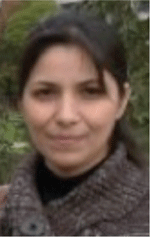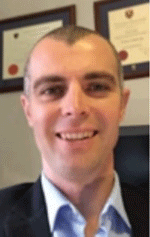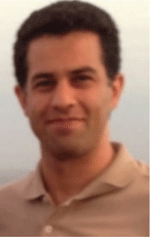Impact of downward releases on the risk profile in hydrocarbon process plants
Fariba Askari A C , Colin Crowley A and Hojat Kord BA Atkins SNC-Lavalin, 191 St Georges Terrace, Perth, WA 6000, Australia.
B Advisian, 240 St Georges Terrace, Perth WA 6000.
C Corresponding author. Email: fariba.askari@atkinsglobal.com
The APPEA Journal 60(1) 82-87 https://doi.org/10.1071/AJ19199
Submitted: 11 December 2019 Accepted: 18 February 2020 Published: 15 May 2020
Abstract
Quantitative risk assessment (QRA) calculations for major hazard installations often involve consequence analysis calculations for thousands of events, and therefore, some simplifying assumptions are generally required. The simplifications are usually designed to make the analysis reasonably practicable and reduce the cost of the QRA. Nevertheless, the overall methodology and the applied parameters should be chosen conservatively to cover possible uncertainties. One of the key assumptions in many QRAs is the release direction, which is usually assumed to be horizontal. This is generally assumed to provide a conservative representation of all other possible release directions, which may occur vertically (upward or downward) or at an angle. A sensitivity analysis has been performed and presented in this paper to investigate how different release direction assumptions affect the results of consequence analysis, and eventually, QRA outcomes, i.e. individual and societal risk results. A high-pressure hydrocarbon system is considered as a case study and SNC-Lavalin’s (formerly Atkins) in-house QRA software, ‘RiskTool’, has been used to carry out the QRA modelling. The overall conclusion is that the assumption that all releases are horizontal may lead to a significant underprediction of risks for some types of high-pressure release events. This is because an unimpeded horizontal jet may entrain air, and hence, dilute much more rapidly than a jet that impinges on the ground or nearby obstacles.
Keywords: consequence analysis, F/N curves, LNG plant, quantitative risk assessment, QRA, release direction, risk contour.

Fariba Askari is a Technical Safety and Risk Engineer at Atkins SNC-Lavalin and has a MSc degree in Safety and Risk as well as over 8 years’ experience in the oil and gas industry. Fariba is highly skilled at applying the existing and novel techniques of risk analysis. She has hands-on experience in quantitative and qualitative risk assessment techniques. She has been involved in several QRAs in major offshore/onshore projects. With a BSc degree in Chemical Engineering and previous experience as a Process Engineer, she has in-depth knowledge of process systems in oil, gas and chemical industries. |

Colin Crowley is the Head of the Technical Safety Discipline for Atkins SNC-Lavalin in the Energy Section in Asia Pacific. Colin has 20 years’ experience in the oil and gas industry, providing overall technical safety support. Graduating with a Bachelor of Mechanical Engineering from the University of Western Australia in 1998, he has worked on both onshore and offshore projects, ranging from concept through to detailed design throughout Australia, Asia, Africa and Europe. His projects include manned platforms; floating production, storage and offloading sites; semisubs; wellhead platforms; mobile offshore drilling units; subsea tiebacks and onshore facilities that produce oil, gas and liquefied natural gas. In these projects, he held a variety of roles with both contractors and operators. His specialist expertise includes the management and analysis of technical risk using formal safety assessments; implementation of ‘as low as reasonably practicable’ (ALARP) engineering solutions; hazard identification and ALARP workshop facilitation; safety case and performance standard development; and loss prevention engineering, including hazardous area classification, fire and gas detectors and firewater design. |

Hojat Kord is a highly experienced Process Engineer working in the oil and gas onshore/offshore industry. He has BSc degree in Chemical Engineering and MSc degree in Subsea Engineering. He has been involved in the life cycle of major upstream field development, pipeline and downstream plant projects. Hojat has 18 years’ career experience, with previous roles including as Project Safety Engineer. Hojat has experience in consequence analysis, QRA for SIMOPS and operation modes and executing the QRA outcomes during construction, commissioning and operation of process plants. |
References
Nalpanis, P., and Oke, A. (2011). QRA – UNLEASHING ITS POWER. IChemE SYMPOSIUM SERIES NO. 156. Available at https://www.icheme.org/media/9257/xxii-paper-41.pdf [verified 19/02/2020].NOPSEMA (2017). Risk assessment guidance note. Available at https://www.nopsema.gov.au/assets/Guidance-notes/A122420.pdf [verified 19/02/2020].
Sambasivam, S., Cuffy, G., Lines, I., and Popat, N. (2008). Cumulative Quantitative Risk Assessment of an Oil and Gas Industrial Site: A Case Study. 11th Annual Symposium, Mary Kay O’Connor Process Safety Center. Available at http://psc.tamu.edu/files/symposia/2008/symposium-program/Sambasivam%20ATKINS.pdf [verified 19/02/2020].


